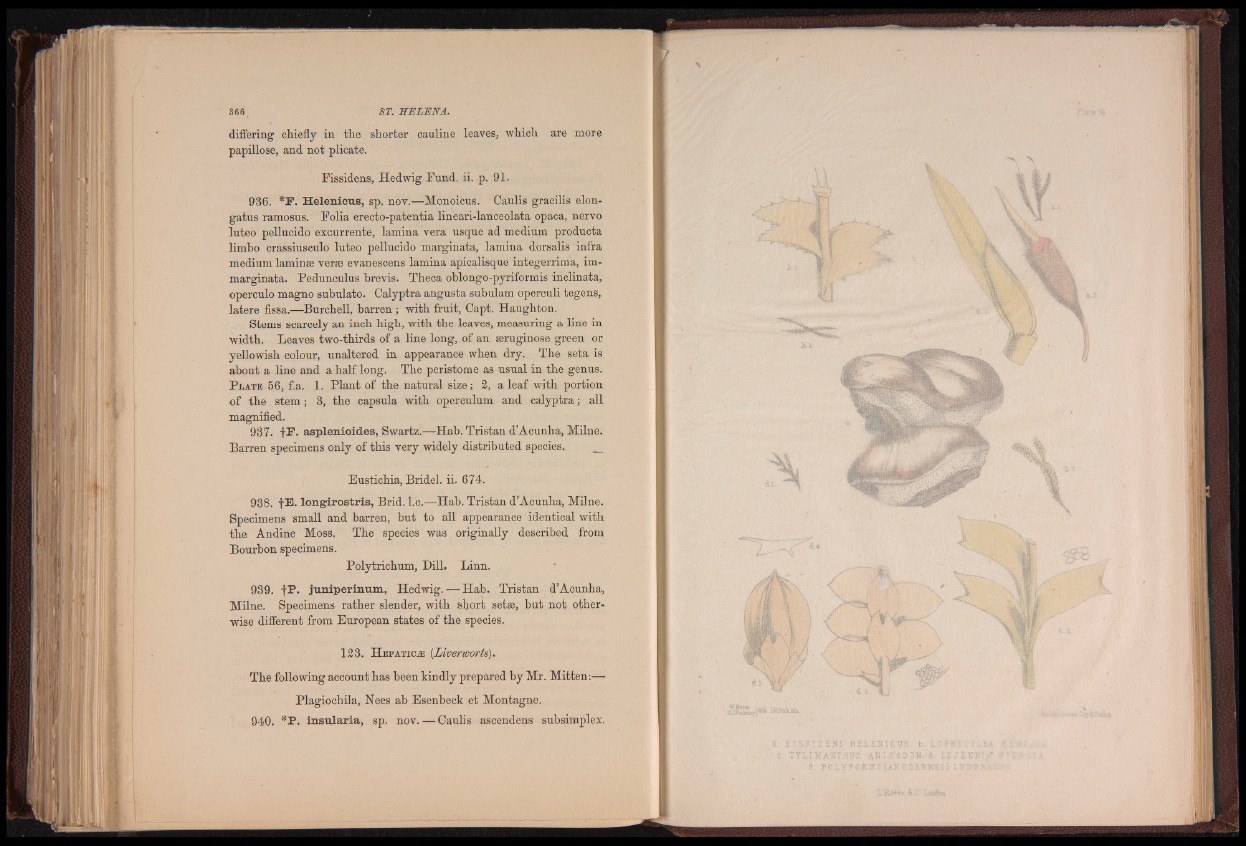
differing chiefly in the shorter cauline leaves, which are more
papillose, and not plicate.
Fissidens, Hedwig Fund. ii. p. 91.
936. * F . Helenicus, sp. nov.—Monoicus. Caulis gracilis elon-
gatus ramosus. Folia erecto-patentia linearidanceolata opaca, nervo
lnteo pellucido excurrente, lamina vera usque ad medium producta
limbo crassiusculo luteo pellucido marginata, lamina dorsalis infra
medium laminse vers evanescens lamina apicalisque integerrima, im-
marginata. Pedunculus brevis. Theca oblongo-pyriformis inclinata,
operculo magno subulato. Calyptra angusta subulam operculi tegens,
latere fissa.—Burchell, barren ; with fruit, Capt. Haughton.
Stems scarcely an inch high, with the leaves, measuring a line in
width. Leaves two-thirds of a line long, of an seruginose green or
yellowish colour, unaltered in appearance when dry. The seta is
about a line and a half long. The peristome as usual in the genus.
P late 56, f.a. 1. Plant of the natural size; 2, a leaf with portion
of the stem ; 3, the capsula with operculum and calyptra; all
magnified.
937. |F . asplenioides, Swartz.—Hab. Tristan d’Acunha, Milne.
Barren specimens only of this very widely distributed species. ^
Eustichia, Bridel. ii. 674.
938. fE. longirostris, Brid. I.e.—Hab. Tristan d’Acunha, Milne.
Specimens small and barren, but to all appearance identical with
the Andine Moss. The species was originally described from
Bourbon specimens.
Polytrichum, Dill. Linn.
939. fP. juniperinum, Hedwig.— Hab. Tristan d’Acunha,
Milne. Specimens rather slender, with short set», but not otherwise
different from European states of the species.
123. H epa tic.® (.Liverworts).
The following account has been kindly prepared by Mr. Mitten:—
Plagiochila, Nees ab Esenbeck et Montagne.
940. *P. insularia, sp. nov. — Caulis ascendens subsimplex.